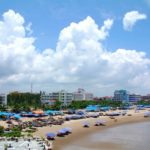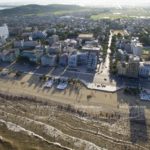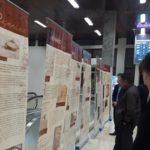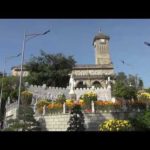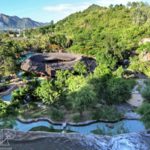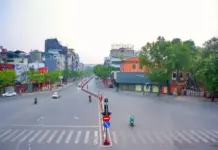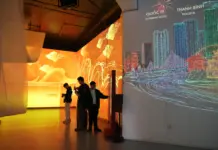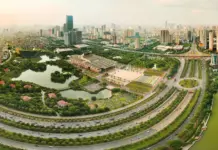Starting from Hanoi Railway Station, the exhibition takes visitors back in time to participate in a tour around Indochina that consists of three stages corresponding to three parts of the exhibition space. The first stage themed “Indochina-Land of Wonders” features various documents, photos and posters highlighting the beauty of famous destinations in the five Indochina regions divided by the French colonists in the past, including Hanoi and Ha Long (the north); Hue, Hoi An and Thap Cham (the central region); Saigon (the south), Wat Xieng Thong and Pha That Luang tower (in Laos), and Angkor Wat (Cambodia). Meanwhile, the second stage themed “Indochina Sea-Paradise of the tropics” introduces many black and white archival images that promoted the beauty of the Indochina coast, especially the blue beaches stretching across three regions in Vietnam such as Do Son, Sam Son, Cua Tung, Vung Tau, Nha Trang and Phu Quoc. Notably, the remaining themed “Indochina Mountains – Ideal relaxing areas” takes visitors to the mountainous destinations for relaxation during the French colonial period including Sapa, Tam Dao, Ba Vi, Ba Na, Bach Ma, Da Lat, Bokor (in Cambodia) and Paksong in Laos. In addition to photos, the third stage showcases several planning drawings of these tourist areas.
Especially, all three stages of the tour are combined with the voice of the narrator and suitable background music such as the whistle of the train and the sound of birdsong and the sea waves. The exhibition is placed in a 3D space, helping visitors feel like they are experiencing a trip around ancient Indochina. The exhibits also reproduced many typical activities of the people associated with each destination, such as the scene of fishermen wearing conical hats while working on wooden boats on Nha Trang beach or the scene of fishermen casting nets at Sam Son beach and the buffalo fighting festival in Do Son.
Bui Thi He, an officer from the National Archives Centre No.1, said according to several studies, modern tourism originated from the "Grand tour" in the 18th century in Europe. This is a trip of the elite young people from Western and Nordic nations to other countries to experience, discover and learn about the culture and arts of the host countries. Along with the process of colonisation in the early 20th century in Indochina, the French colonialists focused on researching and learning about tourist sites to serve the capitalists and officials in the colonial government. Until now, these are still favourite destinations for domestic and international tourists. With nearly 100 documents and images, besides honouring the beauty of the landscapes of Indochina in general and Vietnam in particular, the exhibition introduces sources of archival documents which are considered a source of reference information for the development of tourism products to attract foreign tourists, especially French tourists.
The exhibition has been painstakingly prepared for more than half a year. In particular, the survey document cataloguing and information research to write explanations and citations have been carried out since the beginning of 2022. The design for 2D and 3D spaces and the development of tours were completed nearly two months before the launch date. Diversifying many forms of expression of archival documents and creating several new approaches are remarkable efforts of archivists to prolong their vitality and spread values that have been confirmed by the history of the documentary information sector.
Exploring the Stunning Beauty of Sam Son’s Landscapes
Endowed by nature with long white sandy beaches, turquoise water of a reasonable salty percentage, which is very good for your health, and a system of temples and pagodas on Truong Le Mountain closely attached to the spiritual culture of fishermen, Sam Son Tourist Site in Thanh Hoa Province has now become one of Vietnam’s most popular destinations for tourists.


